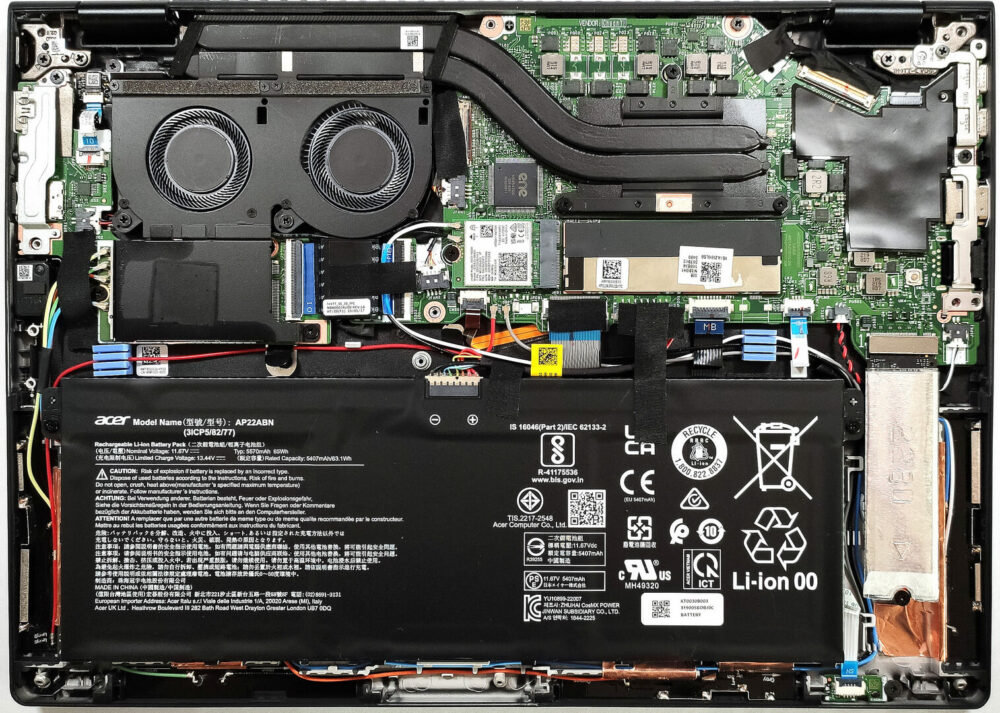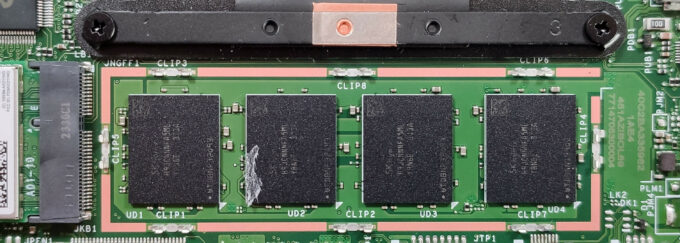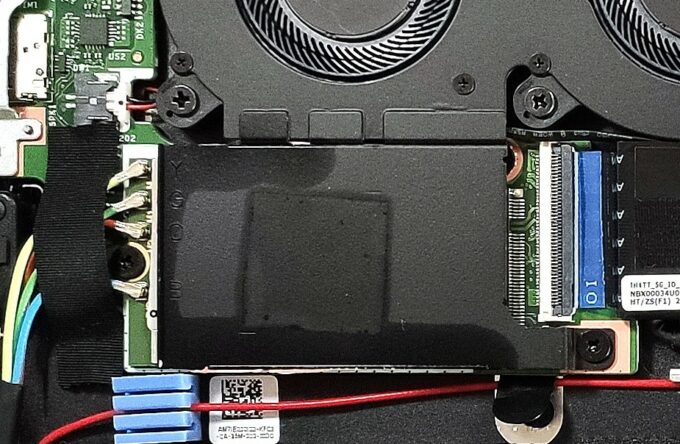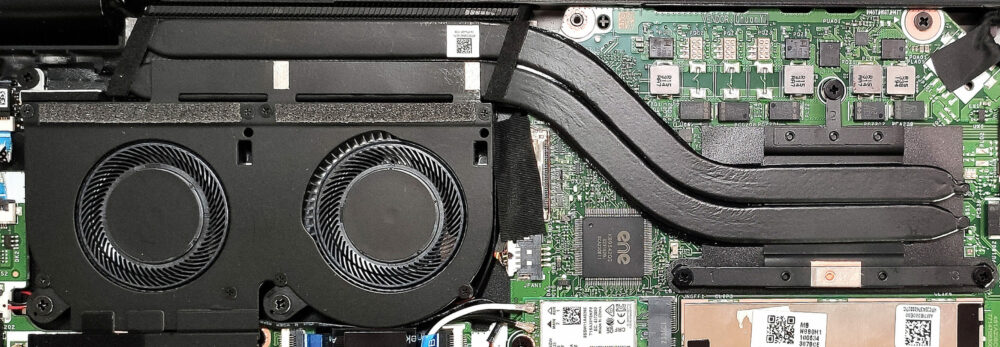How to open Acer TravelMate P6 (TMP614-53) – disassembly and upgrade options
Step 1: Accessing the Internal Components
- Ensure the Acer TravelMate P6 (TMP614-53) is powered off and placed on a soft, clean surface to prevent scratches or damage.
- Remove the 9 Torx-head screws from the bottom of the laptop to open the device.
- Use a plastic tool to gently pry the panel off, starting from the back and working your way around the edges to detach the bottom panel.
Hint: Be careful when prying to avoid damaging the internal clips or the laptop casing.
Step 2: Removing the Battery
- Disconnect the battery by unplugging its connector from the motherboard.
- Remove the two Philips-head screws securing the battery to the laptop’s chassis, then lift the 65Wh battery away from the device.
Caution: Handle the battery and its connector with care to avoid any damage.
More info: The 65Wh battery provides up to 16 hours and 40 minutes of web browsing, or 14 hours and 17 minutes of video playback, offering excellent battery life for extended use.
Memory
- The laptop comes with soldered 32GB of LPDDR5-4800MHz RAM, providing high-speed performance for efficient multitasking and productivity.
More info: While the memory is not upgradeable due to its soldered nature, 32GB of LPDDR5 RAM is ample for most professional and computing needs.
Storage Upgrade
- Locate the single M.2 slot on the motherboard that supports 2280 Gen 4 SSDs for high-speed storage solutions.
- Consider upgrading or adding a new NVMe SSD to enhance the laptop’s storage capacity or improve overall system responsiveness and load times.
More info: On the left, beneath the cooling, is placed the WWAN slot for optional 5G connectivity, offering additional versatility for on-the-go internet access.
You can buy Gen 4 M.2 SSD modules here: Buy from Amazon.com (#CommissionsEarned)
Step 3: Examining the Cooling System
- Review the cooling system, which includes two small fans, a pair of heat pipes, one top-mounted heatsink, and a heat spreader, designed to efficiently manage the thermal output of the laptop.
More info: This cooling configuration, though compact, is effectively designed to keep the laptop cool under various workloads, ensuring stable performance during use.















